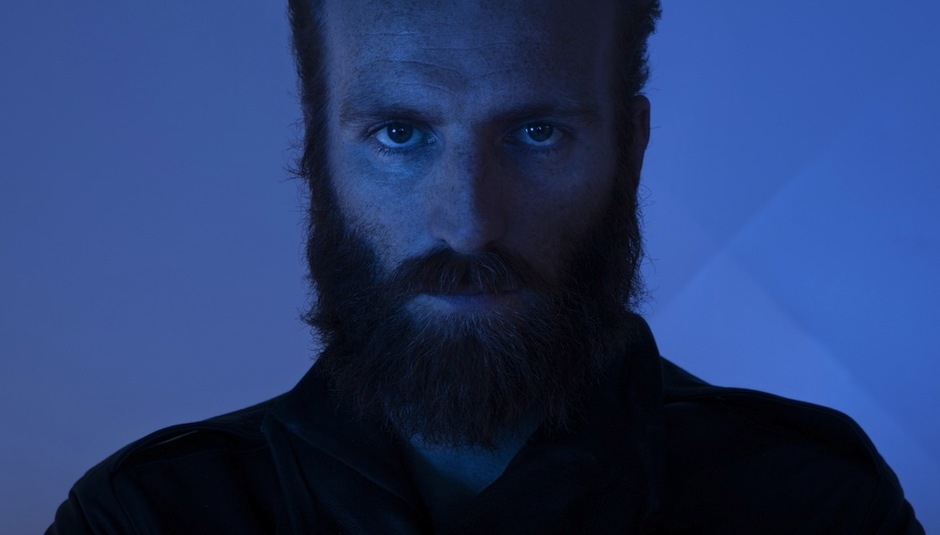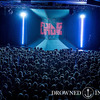If you’re looking for a reasonably high-brow internet rabbit hole to fall down, you could do a lot worse than one containing Alexander Scriabin, the turn-of-the-20th-century Russian composer of whom it has been said that ‘no-one was more famous during their lifetime, and few were more quickly ignored after death’.
Possible reasons for this state of affairs range from Scriabin’s (quite uninteresting) mysticism to his work’s (quite interesting) complexity to his (the reason we’re here) utterly magnificent general craziness. Key example - his great unfinished magnum opus, ‘Mysterium’, which he’d spent 12 years obsessing over prior to his death in 1915, was intended as ‘a stage work of immense proportion and conception’, according to his biographer Faubion Bowers’s understatement of the century:
Bells suspended from the clouds in the sky would summon the spectators from all over the world. The performance was to take place in a half-temple to be built in India. A reflecting pool of water would complete the divinity of the half-circle stage … The choreography would include glances, looks, eye motions, touches of the hands, odors of both pleasant perfumes and acrid smokes, frankincense and myrrh. Pillars of incense would form part of the scenery. Lights, fires, and constantly changing lighting effects would pervade the cast and audience, each to number in the thousands … The universe would be completely destroyed by it, and mankind plunged into the holocaust of finality.
This might sound like a somewhat over-egged reference point with which to introduce Ben Frost’s admittedly rather plunging, cleansing music. Not least because for all his multimedia polymath tendencies - a recent Pitchfork review opened with a note about Frost’s frequent references, in interviews, to ‘biology, astronomy, literature, nature, art, professional basketball’ - his music draws the majority of its power from a single-minded drilling-down into sound itself.
But Frost’s recent show at Oval Space was specifically a multimedia project, working with visual artist Marcel Weber (MFO) to draw out the shards of (implied, thematic, variously refracted) light that permeate his latest album, A U R O R A, in order to curate an experience akin to the feeling of ‘being inside a particle accelerator’. And I think it’s helpful to think about the successes and failures of the show, and this project, with reference to an earlier work of Scriabin’s that anticipated some of the less ambitious facets of ‘Mysterium’ and, perhaps, much of what’s at stake when one equates the marriage of music and light with a ‘device that uses electromagnetic fields to propel charged particles to high speeds and contain them in well-defined beams’.
Scriabin wrote ‘Prometheus: the Poem of Fire’ in 1910, inspired partly by the Greek myth but mostly by his desire to experiment with his latest batshit invention, the clavier à lumières or ‘colour organ’. Unrealised in his lifetime, the idea was to create an instrument with a keyboard that ‘played’ colours, instead of musical notes, based on Scriabin’s synaesthetic sense that every key has an associated colour that places it on a complete colour wheel, the transitions between fifths equating to equivalent progress between red and violet (so G is orange, D is yellow, A is green and so forth).
Scriabin being Scriabin, though, the staff he chose to write for his imaginary instrument (imaginary but also much-imagined, by various kooks throughout the centuries; it wasn’t a particularly original idea) is deeply ambiguous, consisting of two interwoven parts, only one of which is connected to the prevailing harmony as the work progresses, the other following a path of its own. Scriabin’s score also failed to include any reference to the manner in which the colour ought to be projected during a performance. Some interpreters have made the case for a screen, to scale the colour appropriately for a single ‘instrument’ of the orchestra; others believe coloured light should flood the concert hall. The performance of ‘Prometheus’ I attended a few years ago, conducted by Vladimir Jurowski at the Royal Festival Hall, projected a compromise roughly halfway between the two on the ceiling of the hall.
Unfortunately, Jurowski also illuminated the limitations of this particular approach to Gesamtkunstwerk-making, particularly when the music at its heart is dazzlingly multifaceted. Let’s turn again to that Wikipedia description of a particle accelerator: making like the Hadron Collider sounds like a pretty cool thing to do, but actually the energies at work here boil down to little more than propulsion, containing that propulsion, and collision - in the case of the LHC, anyway. As Ben Frost apparently recognises, light and projected colour are extremely effective when it comes to drawing out and setting fire to the presence of these patterns and moments in his work - hence the central role they play in the music of, like, nightclubs, with its churning momentum and cliff-edge drops. But is he less cognisant of the fact that it’s often at the expense of many of the deviations, ambiguities and sub-narratives that make interesting music interesting?
‘Prometheus’ is a strange work, largely constructed out of flickering little inversions and transpositions of the famously unsettling ‘mystic chord’ of A D# G C# F# B that features in a lot of Scriabin’s later composition. And yet my memories of the RFH performance are fairly conventional, a slow-building series of darting, ever-bolder Promethean experiments (thefts?) of piano, percussion and oboe that, while contained by a counter-narrative of clashing piano and brass, each go a little bit further, the projections’ progress around the colour wheel reflecting this movement through the gears - until finally a full-on collision cannot be avoided, and an explosive finale is played out with the assistance of a choir singing not-quite-words, and a flash of white light. It seems I’m not the only one: the Guardian’s review describes ‘one of the mightiest climaxes in late-Romantic music’, while Classical Source remembers ‘white brilliance, the music orgasmic when arriving at its loud and long final chord’.
Thing is, listen to a recording of ‘Prometheus’ in isolation and you’ll quickly realise that the final two minutes do contain one almost satisfying climax - but it’s eerily undermined by a (rather Ben Frost-esque) trickle of xylophone, and it’s also just the first part of a patchwork passage of spells of silence and mystical swirls that ends with a final, out-of-nowhere F# major triad, so at odds with what has come before that it alarms, rather than resolves. Similarly, the methodical propulsion that in my memory hurried the first three-quarters of the piece on, contained with occasional controlled interventions, is actually a much weirder sequence of jazz improvisations, slack mysticism and almost ironic crescendos, flecked with strangled trumpet and playful strings in a manner that makes me question whether it actually progresses in any meaningful, substantial way before the closing remarks. In other words, the light played a trick on us, at the expense of Scriabin’s achievement - something I think he recognised as a risk, hence the ambiguous extra part of unconnected colour transitions. But it’s not enough.
The story of Frost’s collaboration with MFO is a similar one, albeit with an important caveat: the wildman propulsion of oppositional blocks of sound towards one another, and the half-graceful, half-muscular art of just about holding them off, in real time, until it’s explosively fruitful to let them collide, are so central to Frost’s project that inevitably less is lost, here, than is lost with multimedia Scriabin. And by Ben Frost’s project, I mean both music and performance. Frost is that rare thing, a compellingly watchable (primarily) electronic artist, marshaling his musics with his body as well as his fingers/brain, and augmenting its abstract shapes with aggressive visual metaphors/realities, thrashing a guitar directly towards an amp, say, to achieve maximum levels of residual feedback, or - as I witnessed at Michael Gira’s Mouth to Mouth festival a couple years ago - flanking himself with two terrifying drummers, dressed like Frank Miller’s Mutants and brutally, inexhaustibly competent. Propulsion, containing and collision are, in short, the most prominent energies of IRL Ben, as well as Ben via headphones.
MFO’s light work was, conveniently enough, based on three approaches that neatly align with my interpretation of Ben’s imagined particle accelerator: abstract textures of spots and lines to accompany passages of slowly swelling momentum; a front-projected Eye of Sauron-ish tractor beam, twinkling through Ben, and containing him and certain strands of sound; and the inevitable strobes of climax. They’d also set up a pretty neat audience-facing projector, which fired out carefully calibrated sheets of white light, shrinking and growing and rotating. In MFO’s defence, the presence of this particular device is harder to reconcile with my suggestion that his interpretation of Frost’s music was simplistic.
Much of the collaboration did echo the Scriabin effect, though. Take two of the more immediate tracks from from A U R O R A, ‘Venter’ and ‘Nolan’, both of which played important, stretched-out roles in Frost’s set (the latter was his closer). I like the Pitchfork review’s take on the tendency of tracks like these to offer ‘some kind of introverted, experimental take on an EDM drop’, but here much of the introversion was lost in the wash of accompanying light. That’s not to say that these tracks became exclusively about the drop, but rather that the build felt considerably less interesting as a result of the blinking pressures and glowing frame.
As with ‘Prometheus’, when I returned to both tracks after the show, I was struck by their peculiar deferred emphases. After its chaotic, dazing opening, and then its deeply textural establishment of beats for beats’ sake, ‘Nolan’ reworks the old trance trick of forcing a melody through the fug, then holding back the drop at the exact point it seems it’s coming, before letting it go in a blissful moment of delayed gratification - by instead paralysing the melody with a kind of drilling fizz, for so long that it’s bruising rather than cathartic, and then quickly re-enveloping it in noise once it is finally released. ‘Venter’’s swelling build, meanwhile, isn’t really a build at all; it is the track, basically, its beats functioning more like passive Reichian minimalism than late 90s dance music, its increasing volume more a product of layered momentum than crescendo, flecked with bells echoing earlier tracks. When its own melody breaks through, four minutes in, it’s contained within the controlled rhythms that preceded it, a flat transition into a different texture, as in Reich’s ‘Drumming’, rather than a peaking high.
And yet my memories of both tracks, as realised at Oval Space, are of blissed out pauses for breath, followed by powerfully swelling new ideas, sometimes clipped before they got out of control, sometimes resolving themselves in roaring conclusions - rather than the cerebral reordering and interweaving of these moments that defines the record. Are these knots simply too intricate for the broad brushstrokes of light and colour to unpick?
There’s a more interesting conclusion to be found, here, than simply: accompaniments of light and colour tend to over-simplify the nuances of sophisticated music, and therefore intelligent musicians ought to use them sparingly in performance. And its basis is Ben Frost, rather than Alexander Scriabin. Because although Scriabin squeezed his highly original ideas into established, familiar shapes - Aaron Copland described his decision to rely upon ‘the strait-jacket of the old classical sonata-form’ as ‘one of the most extraordinary mistakes in all music’ - even these can’t really be described as on any level basic, whereas the tools of Ben Frost’s trade are often disarmingly simple. Take a track like ‘Secant’ from A U R O R A: its principal parts are industrial stomp and a trancey hook, Marilyn Manson-ish chug and 65days-ish feedback; some pretty straightforward red meat, in other words. And yet the sum is something far more fractured and melancholy.
What this means is that with Frost, simplicity and simplification become loaded terms. They are, to some degree, the whole point, rather than a tendency deserving of special critique. And the recognition of this truism ensures that an uncomplicated, abstract light show suddenly makes much more sense as an accompaniment to Ben’s music; it’s a totally viable alternative to the presence of, say, pugilistic percussionists, adding little to the overall effect but reminding us of the blunt instruments with which he makes his art.
It’s another visual metaphor, really. Quite a good one actually. Because just as Thor Harris hammering a cymbal on stage is a compelling illustration of the way Frost unleashes currents of noise on organic trajectories he’s not fully in control of, before spontaneously managing their collisions, MFO’s unexceptional evocation of the inner workings of the LHC serves to remind us of something quite appealing: that the most sophisticated advances in our understanding of particle physics are emerging from what is, in some respects, a pretty primitive premise. A gigantic ring-shaped tunnel which uses superconducting magnets to encourage two proton beams to whizz round and round, faster and faster, in opposite directions, until at certain allotted points they cross paths - resulting in protons smashing together (and in so doing confirming the existence of exotic, subatomic particles like the Higgs Boson).
Of course, it’s literally the most difficult thing in the world to pull off, but it’s pretty easy to explain. A bit like Ben Frost’s uniquely alchemical ability to take some of music’s most basic ingredients and make masterpieces out of them. As CERN employees would no doubt agree, there comes a point when advancing human knowledge requires us to toss aside pen, paper, laptops, and to build massive rigs instead. And then use them to smash things against other things.
A U R O R A is out now via Mute.
























